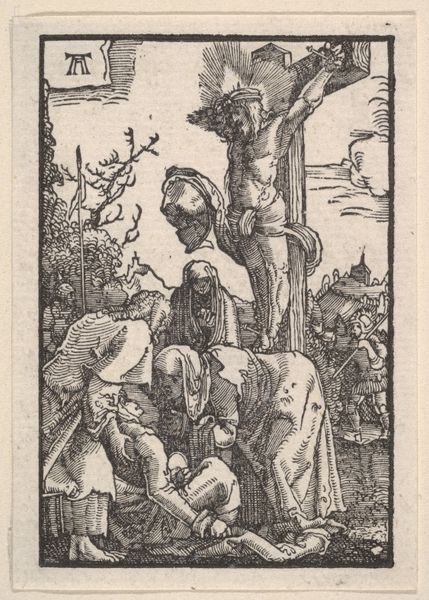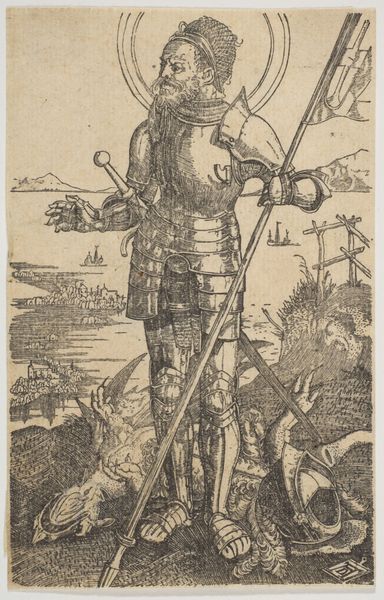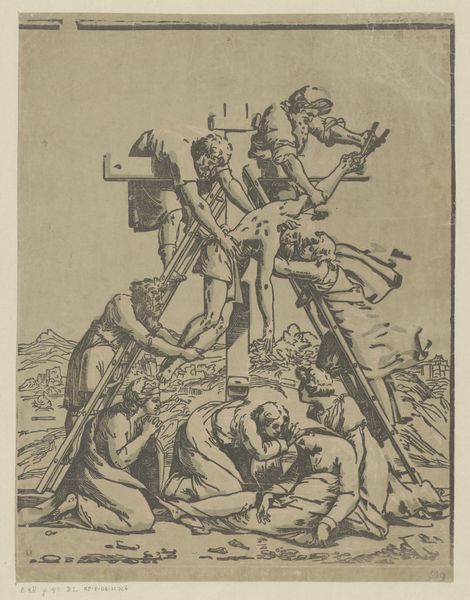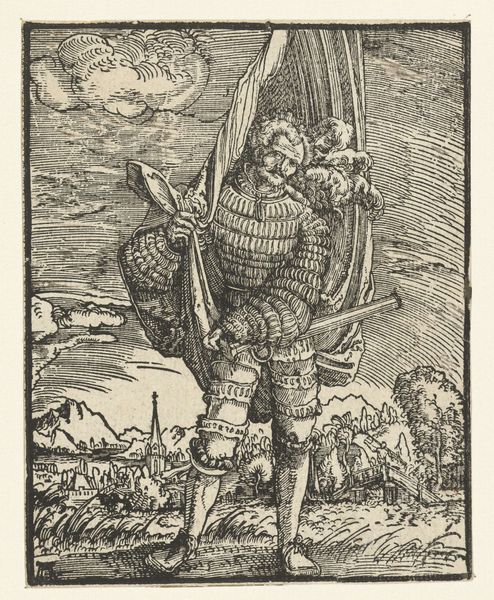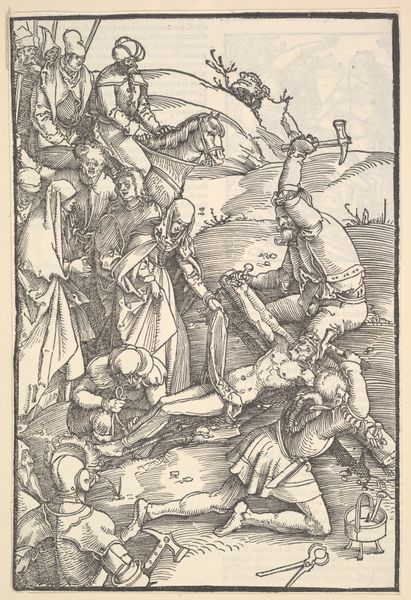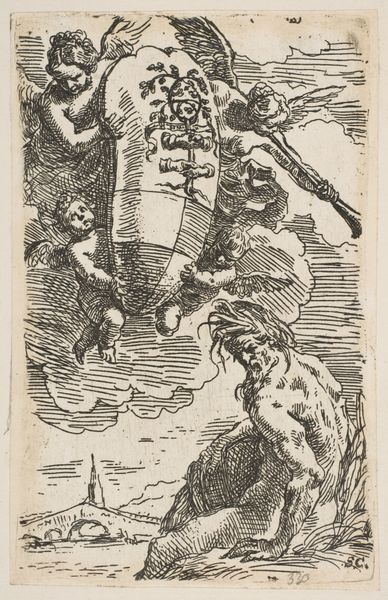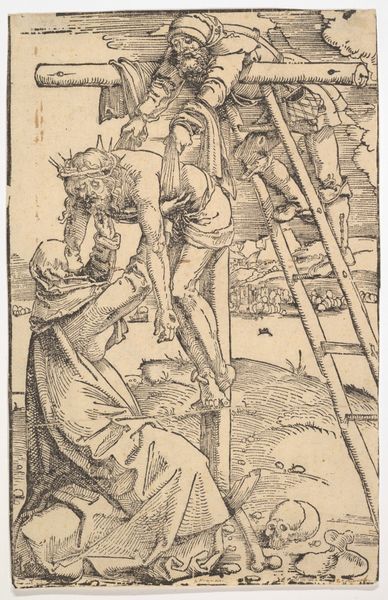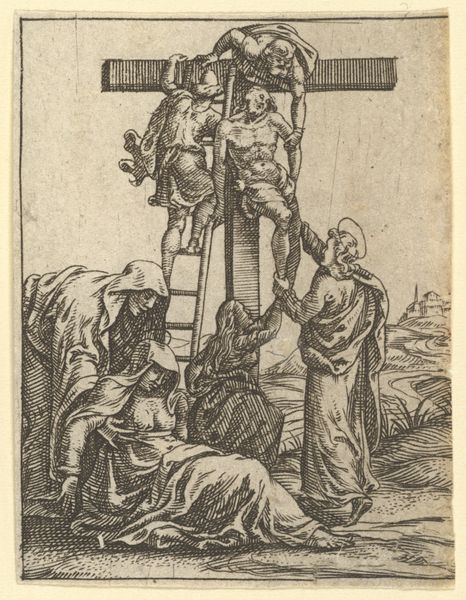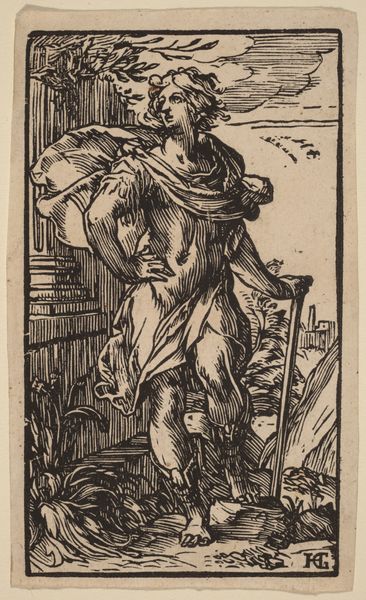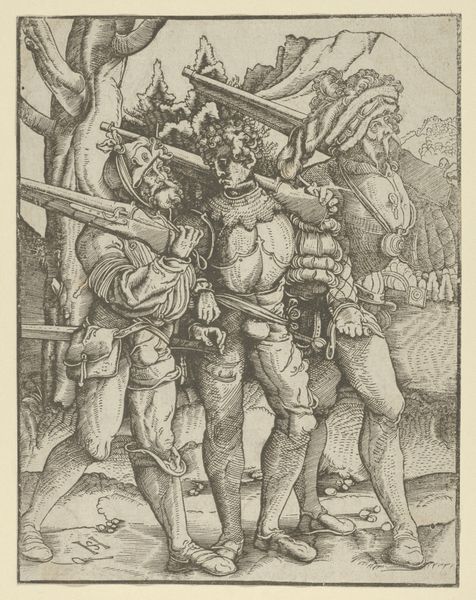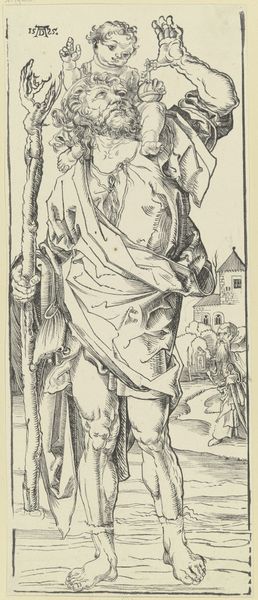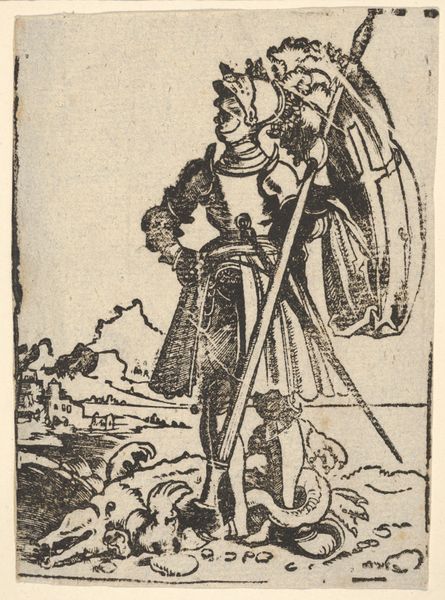
The Descent from the Cross, from The Fall and Salvation of Mankind Through the Life and Passion of Christ 1508 - 1518
0:00
0:00
drawing, print, engraving
#
drawing
# print
#
figuration
#
history-painting
#
northern-renaissance
#
engraving
Dimensions: Sheet: 3 1/8 × 2 3/16 in. (7.9 × 5.5 cm)
Copyright: Public Domain
Editor: This engraving, "The Descent from the Cross," by Albrecht Altdorfer, from around 1515, feels incredibly immediate, despite depicting such a monumental scene. It's not painted, it's engraved, which somehow makes it rawer. What strikes you most about it? Curator: I’m drawn to the material conditions of its creation and its reception. Think about the process: the labor-intensive act of engraving itself. The artist physically gouged lines into a metal plate, creating a matrix. From this, prints could be made, commodities circulated within a developing market. The means of production informed not only the image, but its dissemination. Editor: That's fascinating. It almost makes it sound mass-produced, yet each print would still retain the trace of that initial, very physical act. Did this impact its cultural significance? Curator: Precisely. This wasn't simply about disseminating a religious image. The reproducibility inherent in printmaking challenged the exclusivity associated with painted altarpieces, expanding access to art and potentially altering the consumption habits of the audience. Consider the skill required versus other media like woodcuts and whether or not Altdorfer created his prints himself or outsourced some of the work. Editor: So, understanding the physical act of creating the work, from the engraving to its distribution, opens up a whole new way of interpreting its meaning and purpose in its time? Curator: Absolutely. It shifts the focus from the purely spiritual to the social and economic factors that shaped its creation and consumption, giving the artist power in a time where printed images spread novel perspectives more easily. Editor: I never considered approaching it from this angle before! I appreciate understanding its material context, beyond just the religious scene represented. Curator: Exactly, seeing art through the lens of material and production can reshape our understanding entirely.
Comments
No comments
Be the first to comment and join the conversation on the ultimate creative platform.
